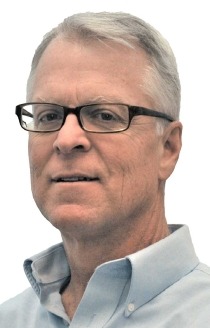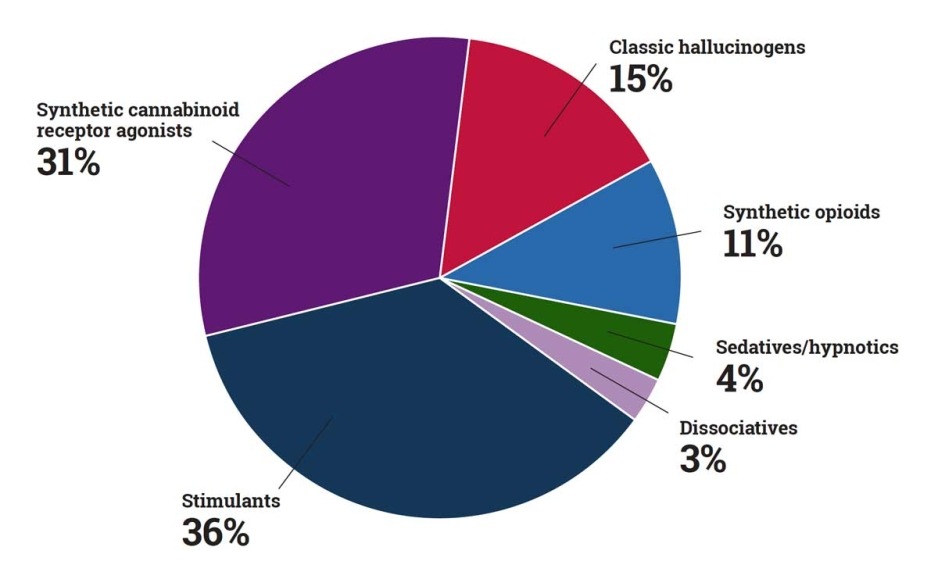
What’s really in bath salts, N-bombs, and synthetic opioids? What are the health risks of taking these drugs? It’s Michael Baumann’s job to find out. As the head of NIDA’s Designer Drug Research Unit, Dr. Baumann and his team study the biological effects of new psychoactive substances (NPSs), lab-made compounds clandestinely created to skirt existing drug laws. He also studies their potential use as medicines. Both mandates demand a dogged yet visionary approach to the science of drug development.
Q: NPSs encompass a huge class of substances with different effects that can be used for varied reasons. You’ve written that many were originally developed as medicines or as research tools. How did they go rogue, as it were?
Scientists have studied NPSs for decades. For example, pharmaceutical companies developed amphetamine-like stimulants as appetite suppressants, and novel opioids as pain relievers. Scientists developed synthetic cannabinoids to study how the brain interacts with cannabis. They also investigated NBOMe psychedelics—N-bombs—as imaging agents to visualize serotonin receptors in the brain.
Because the patent information and biomedical literature are public, the step-by-step recipes for making specific drugs are freely available and can be misused. New drugs are constantly appearing in recreational drug markets worldwide – as you say, rogue. As soon as legislation makes a specific NPS illegal, slightly different chemical versions can be made to evade the law.
New psychoactive substances by effect group
Q. So not all these substances are illegal, but like all drugs, they still have risks. Are these so-called “legal highs” more dangerous than people may think?
Yes. NPS intoxication is often associated with serious and unpredictable adverse effects that can lead to hospitalization and even death. For example, a stimulant-like NPS can cause neurological symptoms like agitation, aggression, and psychosis. An opioid-like NPS can induce respiratory depression, which is a life-threatening condition when breathing becomes slow and shallow and may stop entirely.
Q. How is your lab helping to protect people?
My lab stays on top of NPS trends and investigates how these drugs affect the body. We identify the precise receptor sites where an NPS binds in brain tissue, then we examine its behavioral and physiological effects in rodent models. We publish our results in peer-reviewed scientific journals as quickly as we can to stay current with the shifting drug supply.
Q. When you think about challenges in your job, what looms largest? What keeps you up at night?
At the beginning of the NPS story, I was worried that transnational crime organizations might figure out how easy it is to traffic drugs over the Internet. Sadly, those worries have been realized. In fact, the illicit manufacturing, marketing, and trafficking of fentanyl that is driving our current opioid overdose crisis in the United States is taken right out of the NPS playbook. That’s also exacerbated by the emergence of opioid NPSs, such as 2-benzylbenzimidazole opioids or “nitazene” compounds. These drugs are showing up as stand-alone products and as adulterants in heroin and counterfeit pain medications, and they’re even more potent than fentanyl.
Q. How do you stay on top of the changing NPS landscape?
We connect the silos of information from various groups that are responding to the NPS problem—clinical toxicologists, who are seeing patients intoxicated with NPSs; forensic chemists, who are analyzing the substances in human case work; and others like me, who are investigating their effects in animal models. Our Unit has a global network of collaborators tracking and studying NPSs.
Government and health agencies like the Drug Enforcement Administration and the World Health Organization use our findings to help policy makers make informed legislative decisions about the drugs. There have been more than 1,000 substances identified globally, and it is a daunting task to decide which to study in our preclinical experiments. Typically, we study drugs that law enforcement has encountered hundreds of times, or that have been implicated in drug overdose deaths.
Q. Could some of these drugs be used for medical purposes?
Yes, that’s a distinct possibility. I’m coming full circle due to the renaissance of psychedelics research. Through cooperative research and development agreements with private companies, we are studying how psychedelic NPSs and related substances might be used as medicine to treat substance use disorders. If clandestine laboratories can co-opt the biomedical literature to create NPSs, we can use our knowledge about these substances to identify better medicines. That’s what medicinal chemistry is all about.


